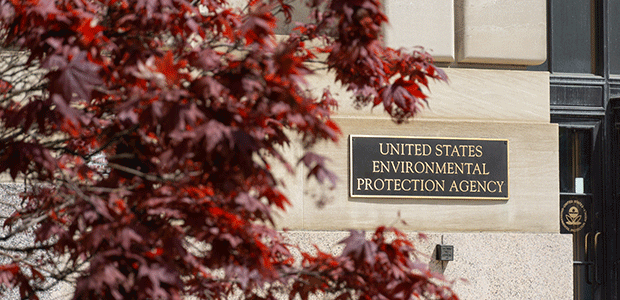
How Important Are EPA Regulations for Businesses Going Green?
With green practices, businesses can save money and energy while still complying with EPA regulations—no matter how lenient or strict they are throughout presidencies.
- By Jane Marsh
- Dec 11, 2020
Sustainability has become a common goal among businesses in the United States. It’s a good objective to have, but at times, it is also mandatory. The EPA puts forth regulations for companies to follow, and although they may change over time, they must still be adhered to. The process can be tedious and time-consuming, but is required for green living.
The Various EPA Regulations
The EPA must protect all aspects of the environment. It focuses on everything from air, water and pollution to conservation, endangered species and emergency planning. Therefore, businesses must understand their impacts on each of these areas.
Of course, a company will not always have a direct effect on something like endangered species. However, it may pollute a nearby marsh that is home to certain species. Monitoring the output of toxins and pollution is key for air, water and soil quality.
Two critical acts that former President Richard Nixon set forth in the 1970s include the Clean Air Act and the Clean Water Act. Both pieces of legislation set standards for what pollutants companies can and cannot release into the air and bodies of water. Having strict regulations on these areas reflects on businesses of all kinds.
Small businesses will generally have less to worry about since their carbon footprint is smaller. However, they can release other pollutants and toxins—like mercury—that are harmful to the environment. Bigger companies and manufacturing facilities must ensure they are strictly following EPA regulations.
Changing Presidents, Changing Rules
Since the EPA is a government agency, it is part of the president’s cabinet. Beginning with Nixon, the agency took a firm direction in protecting the environment. Former President Barack Obama continued Nixon’s work and finetuned key restrictions, like stricter rules on mercury waste.
The environmental road has been rocky since President Donald Trump took office. Citing the COVID-19 pandemic as an extreme measure, Trump and the EPA proposed changes to regulations that would ultimately roll back efforts from Obama and previous presidents. These changes included waiving environmental reviews of infrastructure projects during the outbreak and limiting pollution control in the future.
These changes, though legal, show that businesses are always in the back-and-forth of politics. The Trump-era modifications make it easier for companies to bypass regulations that used to be in place, which will lead to more pollution and environmental harm. Now, with federal organizations like the EPA reviewing historical guidance, more changes could come.
For businesses trying to go green, however, these alterations are not definitive. Although most states have their own rules to adhere to, taking action is necessary to reach sustainable business goals.
Steps for Change
A new version of the EPA emerges with every new president. With president-elect Joe Biden set to transition into the White House in January, the EPA will undoubtedly take a new direction. With it, restrictions may once again tighten, or new regulations may emerge.
Businesses will need to comply every step of the way. However, they can go green at any time by switching to sustainable resources and materials. Energy-saving appliances and LED lightbulbs are a good place to begin. Renewable energy like solar panels is becoming more affordable than ever, so making the switch now is a beneficial move.
With green practices, businesses can save money and energy while still complying with EPA regulations—no matter how lenient or strict they are throughout presidencies. They act as a guide for the direction businesses need to head in. A company can take it upon itself to become as sustainable as possible.
The bottom line is that businesses need the EPA to stay in line and prevent environmental harm, but can become more sustainable through these actions at any time.
A Greener Model
The EPA provides the basis for how businesses can limit their effects on the environment. From there, leaders can take sustainability into their own hands and focus on bringing companies to the greenest they can be.
About the Author
Jane Marsh is an environmental writer. You can keep up with her work on her site Environment.co.